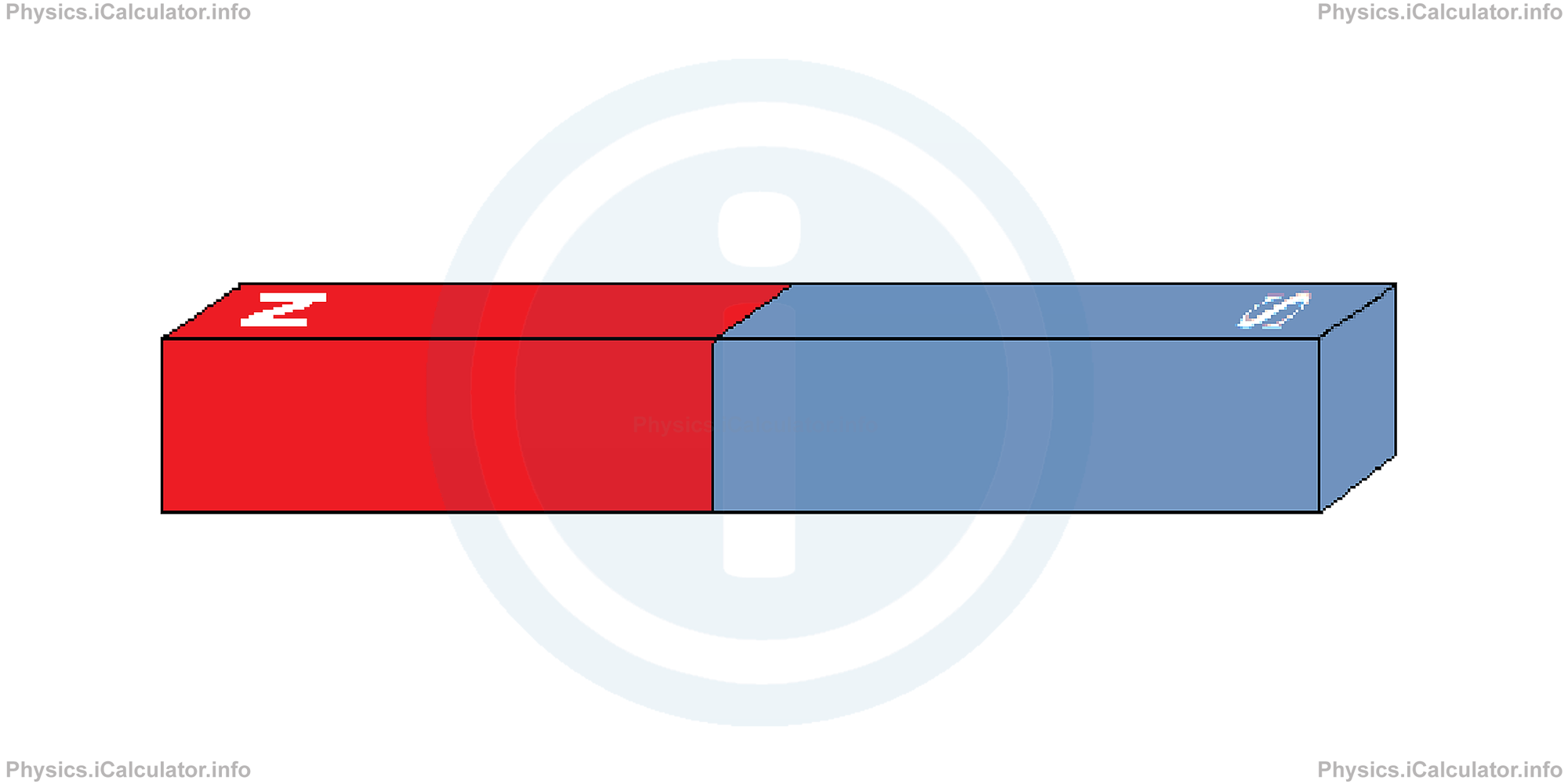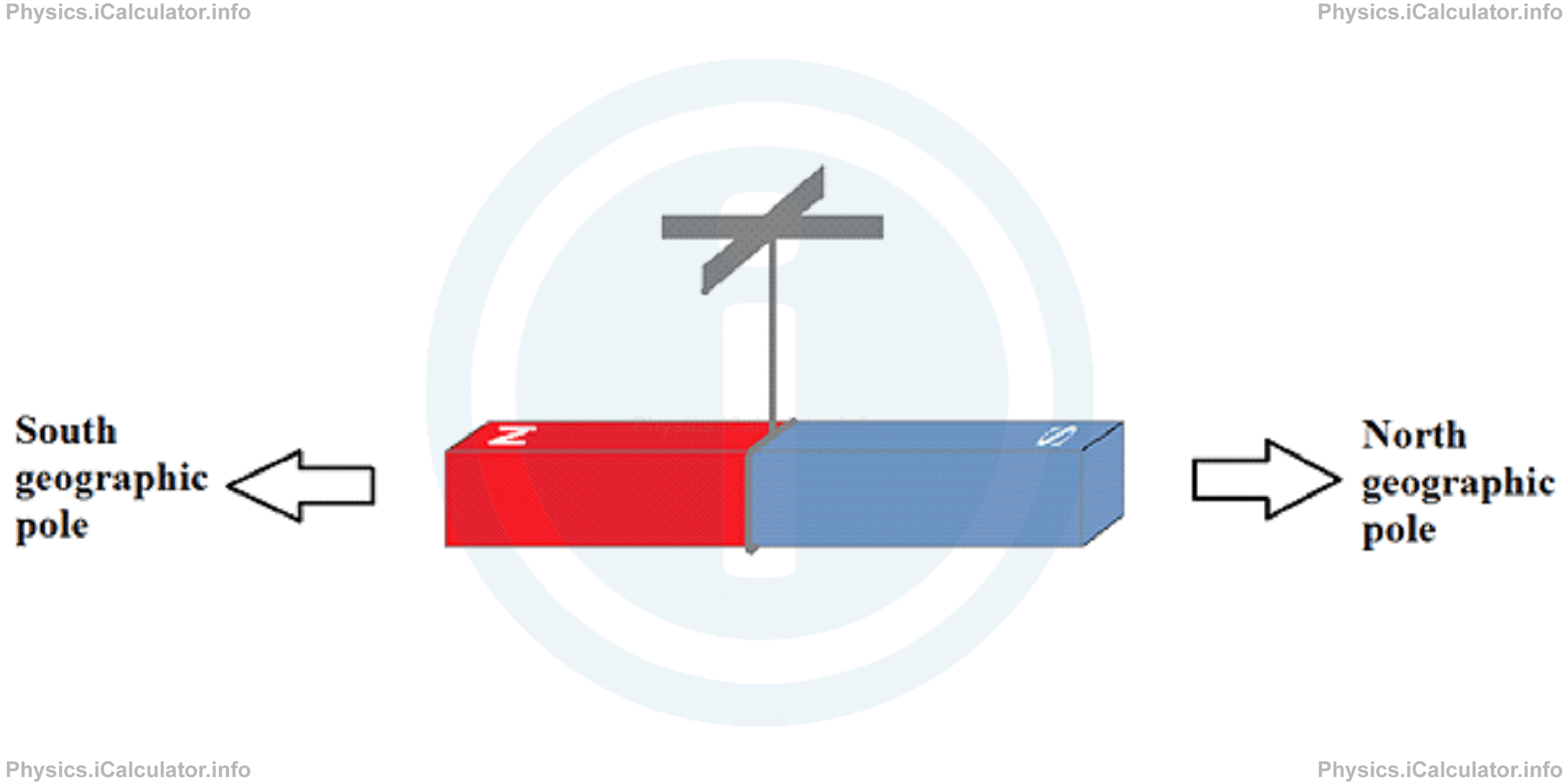Menu
Physics Lesson 16.1.2 - Magnetic Field of Magnets and Earth. Magnetic Poles
Please provide a rating, it takes seconds and helps us to keep this resource free for all to use
Welcome to our Physics lesson on Magnetic Field of Magnets and Earth. Magnetic Poles, this is the second lesson of our suite of physics lessons covering the topic of Introduction to Magnetism, you can find links to the other lessons within this tutorial and access additional physics learning resources below this lesson.
Magnetic Field of Magnets and Earth. Magnetic Poles
By definition, magnetic field is the space around a magnet in which its attractive or repulsive effect is observed. As you see, the definition of magnetic field is very similar to those of other fields (gravitational and electric) we have discussed earlier.
A magnet behaves in opposite way when approaching a magnetic material in two opposite positions. For example, if we bring one end of a bar magnet near an iron nail the magnet attracts the nail while if we bring the other end of the magnet near the same iron nail, the magnet repels it. These two extremities are known as magnetic poles. To make distinction between poles, we call them North and South poles respectively. The North pole is coloured in red while the South pole in blue, as shown in the figure below.

The general law governing the interaction of magnets is similar to that of electric charges, i.e.:
"Like poles repel each other while unlike poles attract each other."
The interaction between magnets is an indicator for the existence of the magnetic force - a force that causes attraction or repulsion between poles as in the law discussed above.
The reason why magnetic poles are named North and South is because when a bar magnet like the one shown below is suspended using a thread, it will align in the North-South direction of the Earth after it stops swinging (when the equilibrium is reached).

Therefore, the magnetic pole pointing towards the geographic North Pole is the South Pole of magnet. However, sometimes it is called the North seeking pole as it point towards the North Pole of Earth. The same for the North Pole of magnet as well. Therefore, one must be careful to avoid confusion.
The reason why this alignment occurs is the existence of a magnetic field produced by the Earth. Indeed, Earth is a giant magnet producing its natural magnetic field. As a result, one of the seven layers of atmosphere known as magnetosphere does exist. It is the outmost layer of atmosphere. It is very crucial in repelling the hazardous cosmic rays coming from all parts of the universe. Therefore, magnetosphere is irreplaceable in terms of the continuity of life on earth despite the fact it does not contain any air.
You have reached the end of Physics lesson 16.1.2 Magnetic Field of Magnets and Earth. Magnetic Poles. There are 9 lessons in this physics tutorial covering Introduction to Magnetism, you can access all the lessons from this tutorial below.
More Introduction to Magnetism Lessons and Learning Resources
Whats next?
Enjoy the "Magnetic Field of Magnets and Earth. Magnetic Poles" physics lesson? People who liked the "Introduction to Magnetism lesson found the following resources useful:
- Magnetic Poles Feedback. Helps other - Leave a rating for this magnetic poles (see below)
- Magnetism Physics tutorial: Introduction to Magnetism. Read the Introduction to Magnetism physics tutorial and build your physics knowledge of Magnetism
- Magnetism Revision Notes: Introduction to Magnetism. Print the notes so you can revise the key points covered in the physics tutorial for Introduction to Magnetism
- Magnetism Practice Questions: Introduction to Magnetism. Test and improve your knowledge of Introduction to Magnetism with example questins and answers
- Check your calculations for Magnetism questions with our excellent Magnetism calculators which contain full equations and calculations clearly displayed line by line. See the Magnetism Calculators by iCalculator™ below.
- Continuing learning magnetism - read our next physics tutorial: Magnetic Field Produced by Electric Currents
Help others Learning Physics just like you
Please provide a rating, it takes seconds and helps us to keep this resource free for all to use
We hope you found this Physics lesson "Introduction to Magnetism" useful. If you did it would be great if you could spare the time to rate this physics lesson (simply click on the number of stars that match your assessment of this physics learning aide) and/or share on social media, this helps us identify popular tutorials and calculators and expand our free learning resources to support our users around the world have free access to expand their knowledge of physics and other disciplines.
Magnetism Calculators by iCalculator™
- Angular Frequency Of Oscillations In Rlc Circuit Calculator
- Calculating Magnetic Field Using The Amperes Law
- Capacitive Reactance Calculator
- Current In A Rl Circuit Calculator
- Displacement Current Calculator
- Electric Charge Stored In The Capacitor Of A Rlc Circuit In Damped Oscillations Calculator
- Electric Power In A Ac Circuit Calculator
- Energy Decay As A Function Of Time In Damped Oscillations Calculator
- Energy Density Of Magnetic Field Calculator
- Energy In A Lc Circuit Calculator
- Faradays Law Calculator
- Frequency Of Oscillations In A Lc Circuit Calculator
- Impedance Calculator
- Induced Emf As A Motional Emf Calculator
- Inductive Reactance Calculator
- Lorentz Force Calculator
- Magnetic Dipole Moment Calculator
- Magnetic Field At Centre Of A Current Carrying Loop Calculator
- Magnetic Field In Terms Of Electric Field Change Calculator
- Magnetic Field Inside A Long Stretched Current Carrying Wire Calculator
- Magnetic Field Inside A Solenoid Calculator
- Magnetic Field Inside A Toroid Calculator
- Magnetic Field Produced Around A Long Current Carrying Wire
- Magnetic Flux Calculator
- Magnetic Force Acting On A Moving Charge Inside A Uniform Magnetic Field Calculator
- Magnetic Force Between Two Parallel Current Carrying Wires Calculator
- Magnetic Potential Energy Stored In An Inductor Calculator
- Output Current In A Transformer Calculator
- Phase Constant In A Rlc Circuit Calculator
- Power Factor In A Rlc Circuit Calculator
- Power Induced On A Metal Bar Moving Inside A Magnetic Field Due To An Applied Force Calculator
- Radius Of Trajectory And Period Of A Charge Moving Inside A Uniform Magnetic Field Calculator
- Self Induced Emf Calculator
- Self Inductance Calculator
- Torque Produced By A Rectangular Coil Inside A Uniform Magnetic Field Calculator
- Work Done On A Magnetic Dipole Calculator